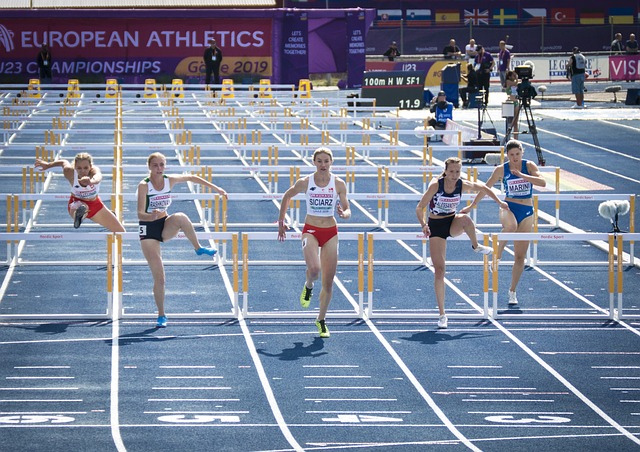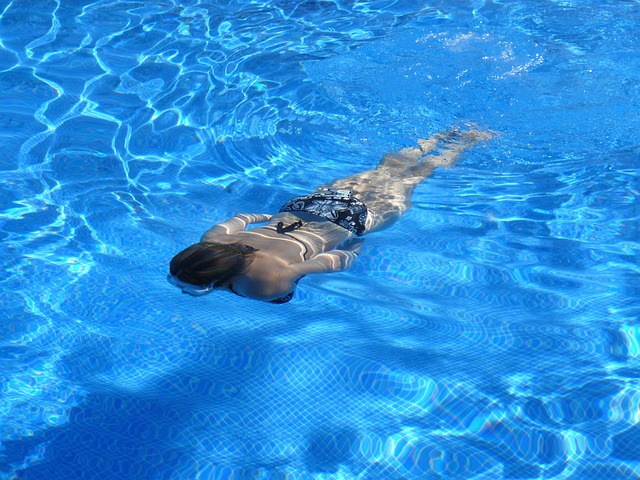Muscle and joint health are critical for athletic performance, and regenerative therapies offer a cutting-edge solution for optimal performance recovery. Unlike traditional methods like RICE, regenerative approaches, including PRP, stem cells, and tissue engineering, stimulate natural healing processes. This proactive strategy accelerates recovery times, prevents long-term damage, and enhances endurance by supporting the rebuilding of healthy muscle and joint structures. Integrating techniques like cryotherapy and compression therapy into post-workout routines further enhances performance recovery, promoting active recovery and accelerated repair for faster recovery between intense training sessions.
“Unleash your athletic potential with regenerative therapies—the game-changer for muscle and joint health. This comprehensive guide explores how these cutting-edge treatments can revolutionize post-workout recovery, specifically tailored for active individuals.
From understanding the fundamentals of muscle and joint function to delving into the science behind regenerative medicine, we’ll uncover the benefits of accelerated healing and reduced inflammation. Learn how traditional therapies meet their regenerative counterparts, offering a new frontier in performance recovery.”
- Understanding Muscle and Joint Health: The Foundation of Athletic Performance
- Traditional vs. Regenerative Therapies for Recovery
- The Science Behind Regenerative Medicine in Sports
- Benefits of Regenerative Therapies for Active Individuals
- Integrating Regenerative Techniques into Your Post-Workout Routine
Understanding Muscle and Joint Health: The Foundation of Athletic Performance

Muscle and joint health are fundamental to athletic performance, enabling athletes to push their physical limits and achieve peak results. These structures form the very foundation upon which strength, agility, and endurance are built. Understanding the intricate interplay between muscles and joints is crucial for optimizing recovery after intense physical exertion.
Regenerative therapies offer a promising approach to supporting this vital health aspect. By promoting natural healing processes, these therapies can accelerate recovery times, reduce inflammation, and enhance overall mobility. This, in turn, allows athletes to return to their active routines faster and with improved performance capabilities, ensuring they stay ahead of the game both physically and competitively, while also minimizing the risk of injury.
Traditional vs. Regenerative Therapies for Recovery

In the pursuit of optimal muscle and joint health, understanding the distinction between traditional and regenerative therapies for performance recovery is paramount. Traditional approaches often rely on rest, ice, compression, and elevation (RICE), along with pharmaceutical interventions to manage pain and inflammation. While effective in the short term, these methods may not address the underlying causes of injury or degradation.
Regenerative therapies, on the other hand, offer a more proactive and holistic approach by harnessing the body’s natural healing mechanisms. Techniques such as platelet-rich plasma (PRP) therapy, stem cell therapy, and tissue engineering promote tissue repair and regeneration, accelerating recovery times and potentially preventing long-term damage. By supporting the body in rebuilding healthy muscle and joint structures, regenerative therapies aim to enhance performance and improve overall athletic endurance.
The Science Behind Regenerative Medicine in Sports

Regenerative medicine has emerged as a game-changer in sports, revolutionizing the way athletes approach performance recovery and injury prevention. The science behind this innovative field centers on harnessing the body’s inherent ability to heal and regenerate tissues. By stimulating cellular repair mechanisms, regenerative therapies aim to restore muscle and joint health, enabling athletes to return to their peak form faster and safer.
One of the key aspects driving the popularity of regenerative medicine in sports is its multifaceted approach. Techniques such as platelet-rich plasma (PRP) therapy and mesenchymal stem cell (MSC) injections promote tissue regeneration by delivering a rich source of growth factors and cells that support healing. This not only accelerates recovery from acute injuries but also helps mitigate chronic conditions commonly associated with overtraining and repetitive stress, ensuring athletes can maintain consistent performance levels without the risk of prolonged downtime.
Benefits of Regenerative Therapies for Active Individuals

Regenerative therapies offer a promising approach for active individuals looking to enhance their muscle and joint health, supporting optimal performance and recovery. These innovative treatments go beyond traditional methods by stimulating the body’s inherent healing mechanisms. By encouraging the growth of new, healthy tissue, regenerative therapies can repair and regenerate damaged muscles and joints, reducing pain and inflammation while improving mobility and strength.
For athletes and fitness enthusiasts, this translates to faster and more effective performance recovery after intense workouts or injuries. Whether it’s a sprained ankle, sore knees from high-impact exercises, or persistent muscle strains, regenerative therapies provide a natural way to accelerate healing without relying heavily on rest or pharmaceuticals. This approach allows individuals to maintain their active lifestyles while promoting long-term joint health and overall athletic performance.
Integrating Regenerative Techniques into Your Post-Workout Routine

Integrating regenerative techniques into your post-workout routine can significantly enhance muscle and joint health, crucial for athletes aiming to maintain peak performance. These therapies go beyond traditional cooling-down methods by promoting active recovery and accelerated repair. For instance, cryotherapy, with its ice baths or cold air exposure, reduces inflammation and delays muscle soreness, enabling faster recovery between intense training sessions.
Additionally, techniques like compression therapy, using specialized garments or braces, improves blood flow and lymphatic drainage, removing metabolic waste products from working muscles. This not only speeds up recovery but also enhances flexibility and joint mobility, vital for maintaining a robust workout regimen over time. By incorporating these regenerative practices, athletes can optimize their performance recovery while nurturing the health of their joints and muscles.
Regenerative therapies offer a promising approach to support muscle and joint health, enhancing athletic performance and recovery. By harnessing the body’s natural healing processes, these innovative treatments can aid in repair and rejuvenation, making them valuable tools for active individuals seeking optimal wellness and swift post-workout recovery. Incorporating regenerative techniques into your routine can be a game-changer for achieving peak physical condition and maintaining long-term health.
